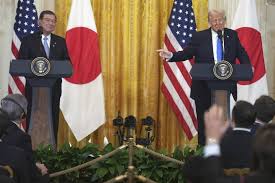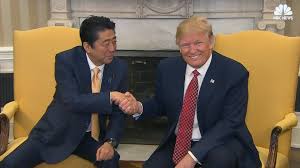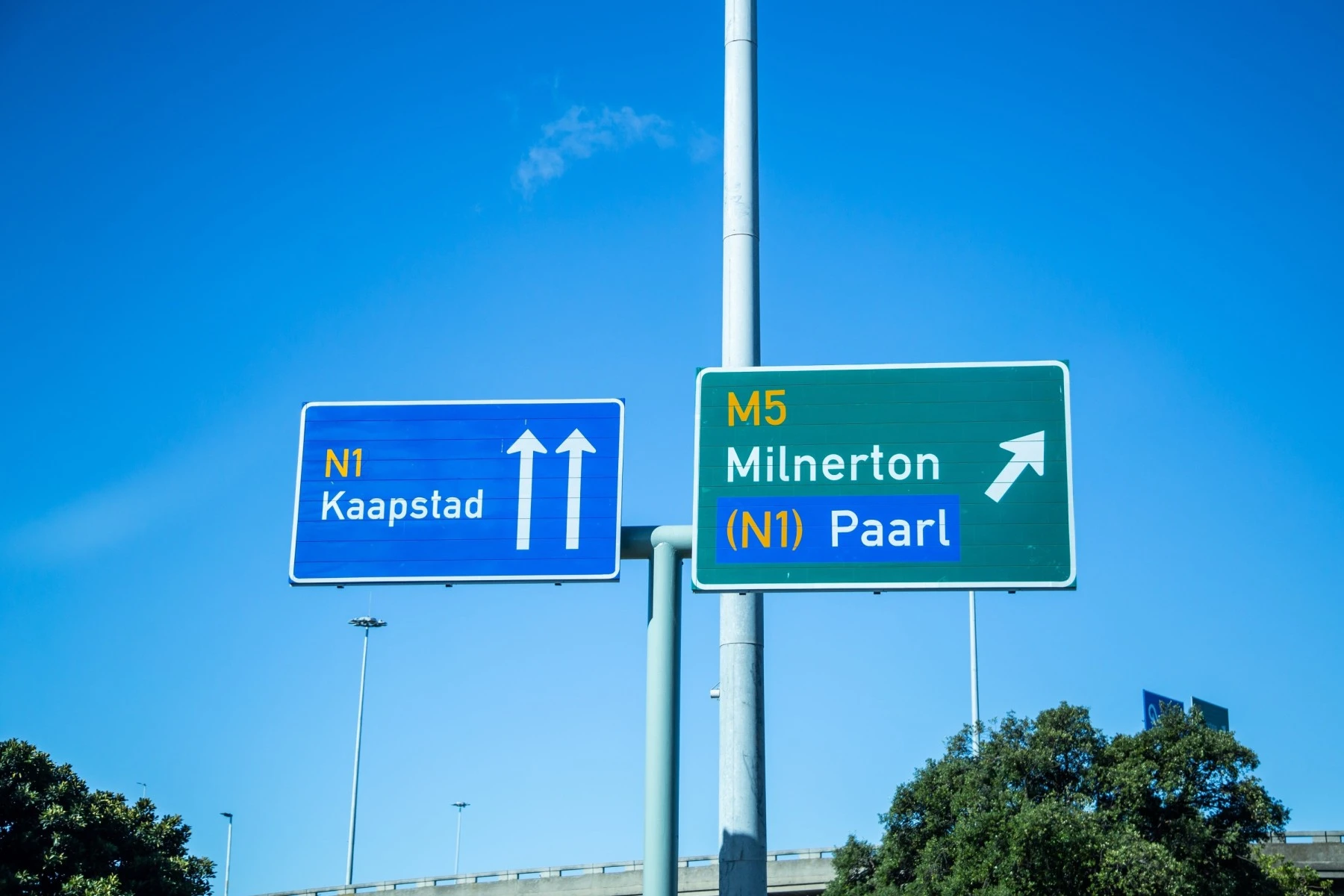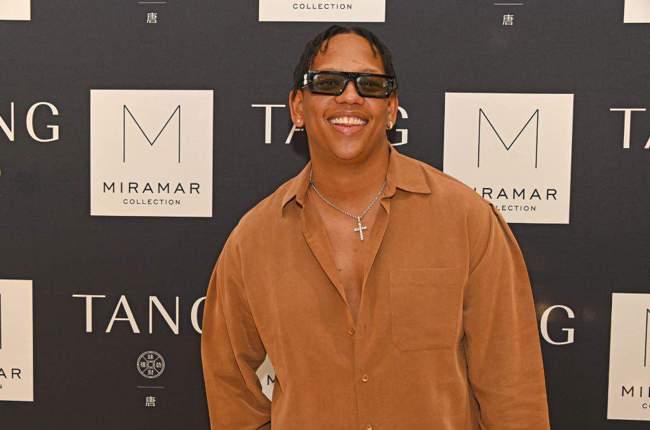
The High Stakes of Trade Diplomacy
In 2017, Donald Trump’s arrival in the White House marked a radical shift in U.S. foreign and economic policy. His “America First” doctrine was designed to focus on reducing trade deficits and bringing jobs back to the United States. For Japan, one of America’s closest allies and a key trading partner, this presented both an opportunity and a significant challenge. Japan, which relies heavily on trade, needed to adapt to this new, unpredictable political landscape while maintaining strong relations with Washington.
Prime Minister Shinzo Abe, who had already established a friendly relationship with Trump before his election, quickly realized the importance of maintaining favorable ties with the United States. With Japan’s economy highly dependent on the U.S. market, Abe embarked on a series of diplomatic efforts aimed at keeping Japan’s trade interests intact. But these efforts, rather than strengthening the relationship, soon unraveled in spectacular fashion.
For more: https://africatrademonitor.com/
Trump’s Trade Policies: A Stark Shift from the Past
Trump’s “America First” approach was a clear break from previous U.S. administrations, which had generally favored multilateral trade agreements. The new president’s policies aimed to reduce the U.S. trade deficit by renegotiating existing agreements and pulling out of international deals that were seen as disadvantageous to American interests.
Under this new framework, Japan became one of the focal points of trade friction. With a substantial trade surplus with the United States—mainly through the export of automobiles and electronics—Japan found itself squarely in Trump’s sights. Throughout the early days of his presidency, Trump repeatedly claimed that Japan was taking advantage of the U.S., pushing for more favorable terms for America in trade agreements.
Japan’s Diplomatic Strategy: Personal Diplomacy and Economic Concessions
In an attempt to ease tensions and win over Trump, Japan quickly turned to personal diplomacy, a hallmark of Prime Minister Abe’s foreign policy. Abe understood that cultivating a personal bond with Trump might be the key to navigating the storm of tariffs and trade disputes that loomed large on the horizon.
Abe made several overtures to Trump that extended beyond traditional diplomacy. He invited the president to Japan for a lavish trip that included a round of golf, a highly symbolic gesture meant to appeal to Trump’s affinity for personal relationships and luxury. These efforts were accompanied by attempts to open the door for increased U.S. exports to Japan, hoping to address Trump’s obsession with the trade deficit.
In addition to these personal gestures, Japan promised to buy more American goods, particularly military equipment, in an effort to align with Trump’s economic nationalism. The hope was that by offering economic concessions and emphasizing the strength of their bilateral relationship, Japan could mitigate the trade pressure coming from Washington.
The Backfire: Escalating Tensions and Unrealistic Expectations
Despite Japan’s proactive approach, its efforts to appease Trump ultimately backfired. One of the most significant early signs of trouble was the collapse of the Trans-Pacific Partnership (TPP), a key multilateral trade deal that Japan had strongly championed. Trump’s withdrawal from the TPP in 2017 marked a significant setback for Japan, which had invested considerable diplomatic capital in the agreement. Japan’s strategy to balance its relationship with the U.S. by engaging in regional trade deals was immediately undercut by Trump’s decision to go it alone.
Moreover, Japan’s efforts to make trade concessions were not enough to satisfy Trump’s demands. While Japan did agree to increase purchases of U.S. military equipment, it failed to prevent Trump from targeting key sectors of the Japanese economy. One of the most contentious issues was the looming threat of auto tariffs. Trump repeatedly warned that he would impose tariffs on Japanese cars, which would have devastating effects on Japan’s automotive industry, one of the cornerstones of its economy.
Even more striking was the lack of recognition Japan received for its diplomatic efforts. Instead of easing the pressure, Trump’s administration pressed ahead with its demands, seemingly unconcerned with Japan’s efforts to placate him. The result was a worsening trade relationship and a growing sense in Japan that its diplomatic strategy was not yielding the expected results.
Domestic Reactions: A Shift in Sentiment
As trade tensions with the United States escalated, Japan’s domestic response was one of increasing unease. The country’s political and business leaders, who had initially supported Abe’s approach, began to question the effectiveness of his diplomatic efforts. Critics argued that Japan had been too accommodating to Trump, offering too many concessions without securing any real trade advantages.
The Japanese public, which had long viewed the United States as a vital ally, also began to show signs of frustration. Many citizens were concerned about the economic impact of rising tariffs and the growing instability in the U.S.-Japan trade relationship. As a result, Abe faced domestic pressure to recalibrate his foreign policy.
In response to the mounting challenges, Japan began to pivot toward other international trade partners. The signing of the Japan-EU Economic Partnership Agreement (EPA) in 2018 was a clear indication that Japan was looking beyond the United States to secure its economic future. This deal, along with other agreements within the Asia-Pacific region, represented a shift away from the U.S. and toward multilateralism.
The Long-Term Impact: Recalibrating U.S.-Japan Relations
Japan’s experience under the Trump administration ultimately served as a catalyst for broader shifts in its foreign policy. While Japan remained committed to its alliance with the United States, the fallout from its failed trade diplomacy with Trump led to a recalibration of its priorities.
Under the Biden administration, Japan faced new opportunities and challenges. While the focus on bilateral trade tensions diminished under Biden’s more traditional foreign policy approach, the lessons learned from the Trump years continued to influence Japan’s diplomatic and trade strategy. Japan’s efforts to diversify its trade relationships and reduce dependency on the United States became even more apparent.
In hindsight, Japan’s failure to secure a stable, mutually beneficial trade relationship with the Trump administration exposed the risks of relying too heavily on personal diplomacy and unilateral concessions. It highlighted the importance of multilateral trade frameworks and the need for Japan to assert its own interests more forcefully in future negotiations.
Conclusion: The Cost of Appeasement and the Path Forward
Japan’s attempts to woo Trump through a combination of personal diplomacy and economic concessions ultimately ended in failure. While Japan’s leaders sought to maintain strong ties with the U.S., their efforts were thwarted by Trump’s transactional approach to trade and his administration’s focus on reducing the U.S. trade deficit. The backfire of these efforts led to heightened tensions, especially in industries like automobiles, and forced Japan to recalibrate its foreign policy approach.
As Japan moves forward, it will need to strike a delicate balance between maintaining a strong alliance with the U.S. and securing its own economic interests through multilateral agreements. The lesson from Japan’s trade efforts with Trump is clear: appeasement and personal diplomacy can only take a nation so far when fundamental economic interests are at stake.
Sources:
- Trump’s Trade Policies and the Impact on Japan
- Japan-EU Economic Partnership Agreement
- Shinzo Abe’s Diplomacy with Trump
The post by:
https://feeds.capi24.com




